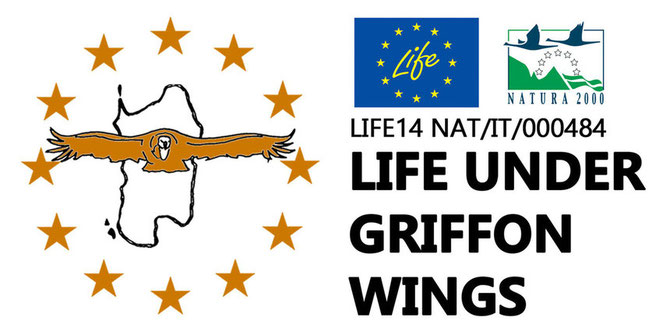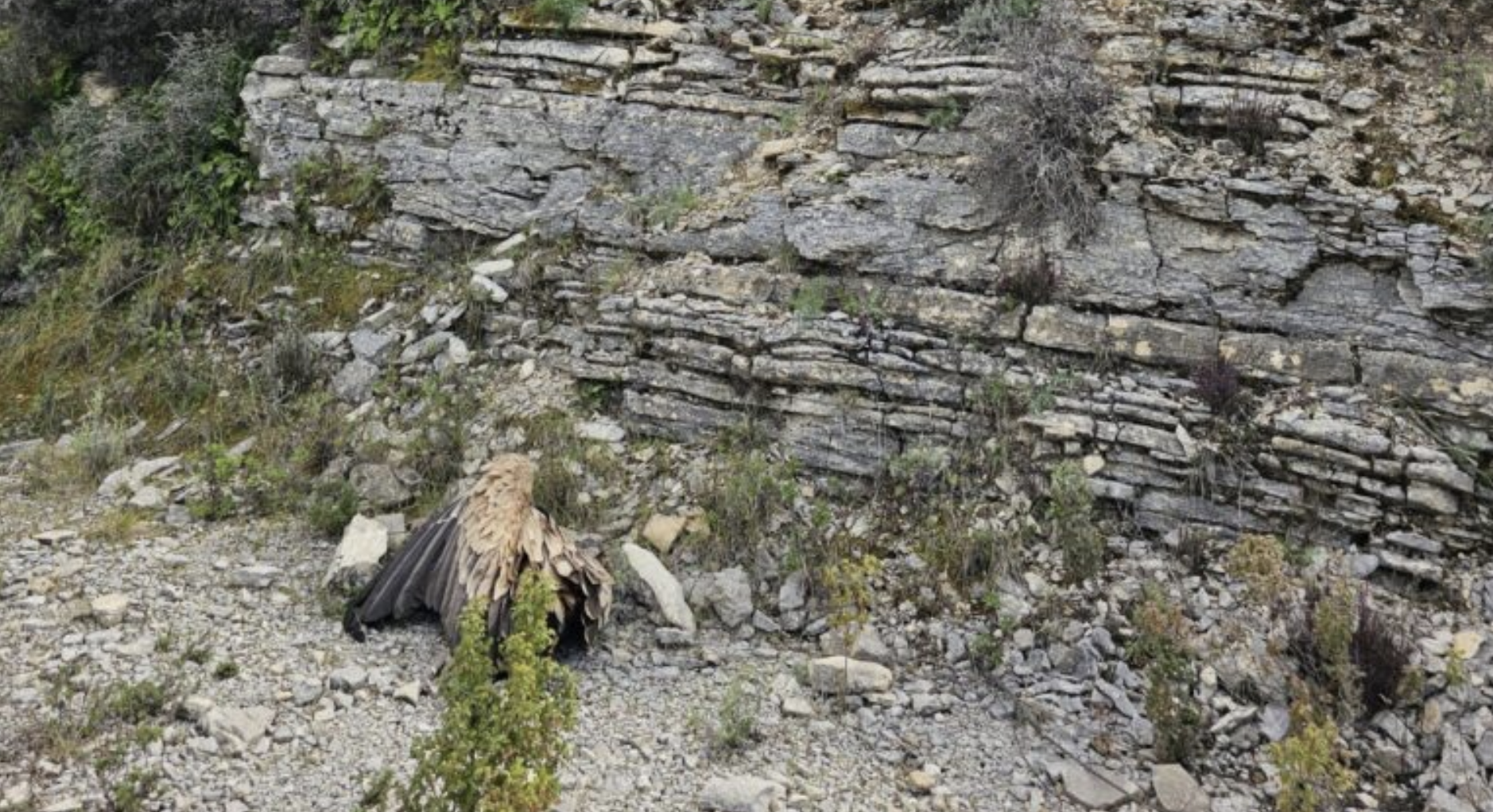
A total of 63 Griffon Vultures have been released in Sardinia so far to facilitate a rapid demographic recovery of the small and threatened Sardinian Griffon Vulture population within the LIFE Under Griffon Wings project. The Vulture Conservation Foundation has transported 65 Griffon Vultures that come from rehabilitation centres from Extremadura in Spain to Sardinia, and zoos also provided other vultures.
How are these birds doing in the wild, and what is the recent estimated population of Griffon Vultures in Sardinia?
Dead and missing vultures
Of the 38 Griffon Vultures released in 2018 (36 from Spain and two from the Netherlands), 32 survived. Two of these birds died in 2018 (Pramma and Monteleone) and one in 2019 (Bulgarian), while three individuals (Crabalza, Cristia and Fenosa) are considered missing. Pramma, released on 13 September 2018, died on 6 October 2018 in the territory of Padria (SS) due to septicaemia following a limb laceration. Monteleone, also released on 13 September 2018, was electrocuted on 9 September 2018 in the territory of Pozzomaggiore. Finally, Bulga, released on 14 April 2018, died due to a collision in the territory of Pozzomaggiore on 31 July 2019.
In 2019, an additional 25 Griffon Vultures (22 Spanish and three Dutch) were released. The first group, made up of 13 Griffon Vultures, was released on 25 June at Monte Minerva. Out of these birds, two have died (Maddalena and Bosa). The other 11 were sighted several times in the breeding and feeding habitat of north-western and central-northern Sardinia. The second group, made up of 12 Griffon Vultures, was released on 22 October at Monte Minerva. Of these vultures, one was recovered and hospitalized at the Centre of Bonassai (Filighe), where he later died, and one (Pedrasenta), marked but without GPS, was never sighted in the following months (Nov/Dec 2019-Jan/Feb 2020). Of the 25 Griffon Vultures released in 2019, 21 individuals were observed until the end of the year and in the first two months of 2020, three died (Maddalena, Bosa and Filighe) and one (Pedrasenta), marked but without GPS, was never sighted in the following months (Nov/Dec 2019-Jan/Feb 2020).
In summary, six vultures have died and four are missing, having a survival rate of 84.1% (53 out of 63) and a mortality rate of 9.5% (6 out of 63).
Sardinia Griffon Vulture census 2019

The Griffon Vulture census in Sardinia was conducted three times (27 October, 7 and 28 December 2019) with the aid of binoculars, telescopes and cameras equipped with telephoto lenses. In the first two censuses, the method of simultaneous observation from vantage points was used, with a total of 13 stations located in the core area between the municipalities of Pozzomaggiore, Bosa and Alghero for a continuous period of three hours (9:30-12:30). In the final census, the transept method was used in the nesting areas of the Bosano and in the habitual dormitories of the species (Monte Minerva, Cossoine and Pozzomaggiore) using four monitoring teams composed of expert Griffon Vulture observers for a continuous-time of four and a half hours (8:00-12:30).
From the data collected, the estimate of the numerical consistency of the Griffon Vulture population in Sardinia corresponds to an ascertained minimum of 230 individuals and a maximum that can be estimated in 250 individuals. These results show the gradual increase of the population of the species on the island when compared to the 2013 survey results, where 130 individuals were counted.
Review the full report.
Source: LIFE Under Griffon Wings
LIFE Under Griffon Wings

Led by Sassari University, the LIFE Under Griffon Wings project aims to improve the conservation status of Griffon Vultures. Their conservation efforts include improving food availability and establishing a network of farm feeding stations that are managed by the livestock breeders themselves. Furthermore, forming an anti-poison dog unit and developing communication actions to raise awareness on the threat caused by the illegal use of poisoned baits as well as carrying out an extensive restocking programme to enhance the small population by translocating around 60 birds from wildlife rehabilitation centres in Spain to Sardinia.
The Vulture Conservation Foundation (VCF) supports this important conservation project which was developed by the University of Sassari in partnership with the Municipality of Bosa, the Forestry Agency and the Corpo Forestale di Vigilanza Ambientale. The project is implemented in collaboration with the regional Departments of Environmental Protection and Health, the Regional Natural Park of Porto Conte, the Instituto Zooprofilattico Sperimentale of Sardinia.
The VCF secures and transports the Griffon Vultures from Spain, and up until now, provided a total of 65 birds, fulfilling the requirements of the project.
Sign up to our newsletter and never miss vulture news!



